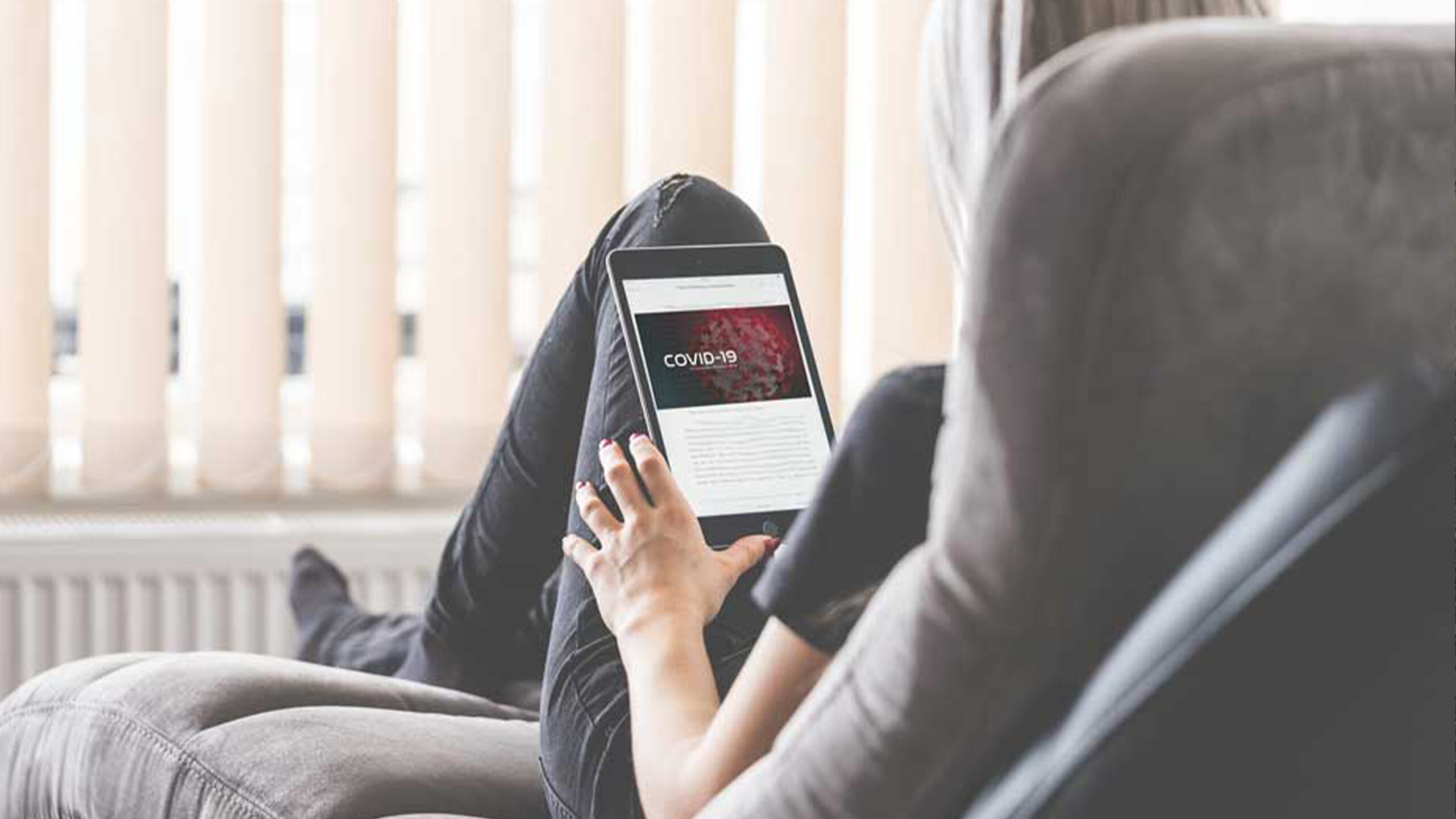Confidence in government officials who comment on the coronavirus is at its lowest level since the start of the pandemic. Journalists are perceived to be less in agreement than previously when it comes to their views on how the pandemic is being handled. These are some of the latest findings of a study being conducted by the non-profit organisation VA (Public & Science) to investigate communication about the coronavirus in Sweden.

In collaboration with researchers from the Karolinska Institute and Södertörn University, VA (Public & Science) is conducting a study of how people are receiving and interpreting information about the coronavirus and the ongoing pandemic. Here are the findings from the 14th wave of the survey, carried out between 17–22 February.
Swedes’ confidence in government officials reached its lowest level in February since the survey began in March 2020. In the most recent wave of the survey, 53 percent of respondents have fairly or very high confidence in government officials who comment on the coronavirus in the Swedish media. Confidence is particularly low among supporters of the Sweden Democrats, of whom 24 percent have fairly or very high confidence, and among men aged between 18 and 29, where the corresponding proportion is 35 percent.
Confidence in politicians who comment on the coronavirus in the Swedish media decreased to 21 percent in February, compared with 26 percent a month earlier. This means that confidence in politicians has fallen to the same low level seen in September and October. Swedes still have the greatest confidence in doctors and other healthcare professionals (90 percent) and in researchers (84 percent). As seen in all of the previous waves of the survey, journalists are the professional group in which Swedes have the least confidence (only 18 percent of respondents have high confidence in this group).
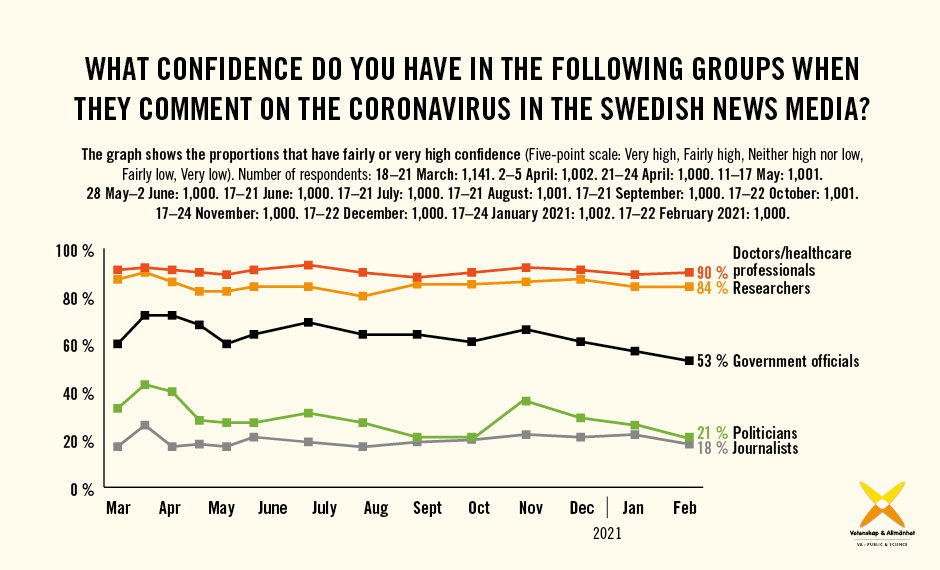
Journalists are perceived to be less in agreement than previously when it comes to how the corona pandemic is being handled in Sweden. In February, 36 percent of respondents perceived journalists as fairly or very in agreement, compared with 43 percent in January. For other professional groups, no significant changes have been seen in the past month.
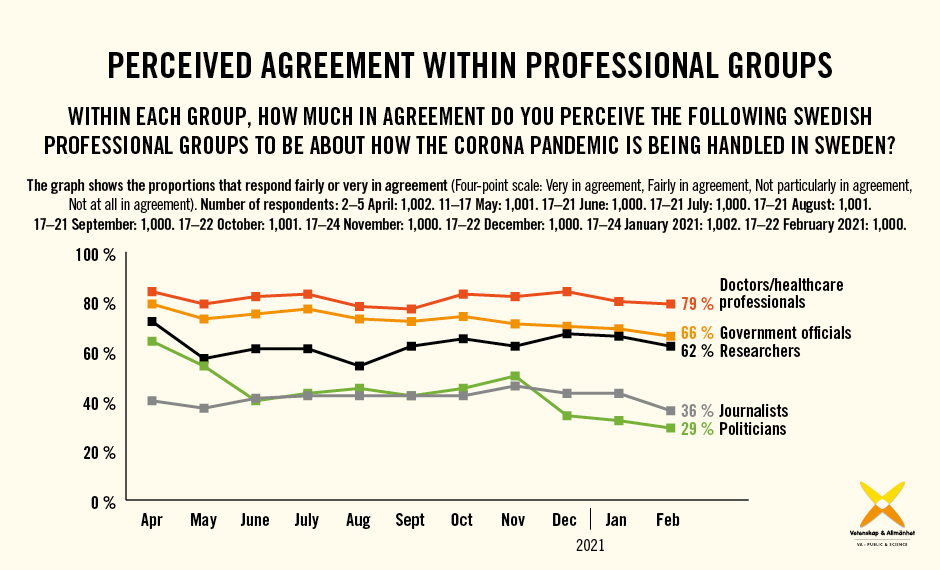
Neither Swedes’ consumption of media, nor their view on the reporting on the coronavirus, has changed significantly since January. The largest proportion (64 percent) of Swedes access information about the coronavirus through Swedish Television (SVT). As in previous waves, relatively large differences in media consumption can be seen in relation to age. People aged 65 or older consume SVT, Swedish Radio, TV4 and local morning newspapers to a greater extent than others but consume the tabloid Aftonbladet to a lesser extent. People aged between 18 and 29 access information about corona through local morning newspapers, the tabloid Expressen, SVT, Swedish Radio and TV4 to a lesser extent than others, but are more inclined to turn to other news media or to not access information about the coronavirus at all.
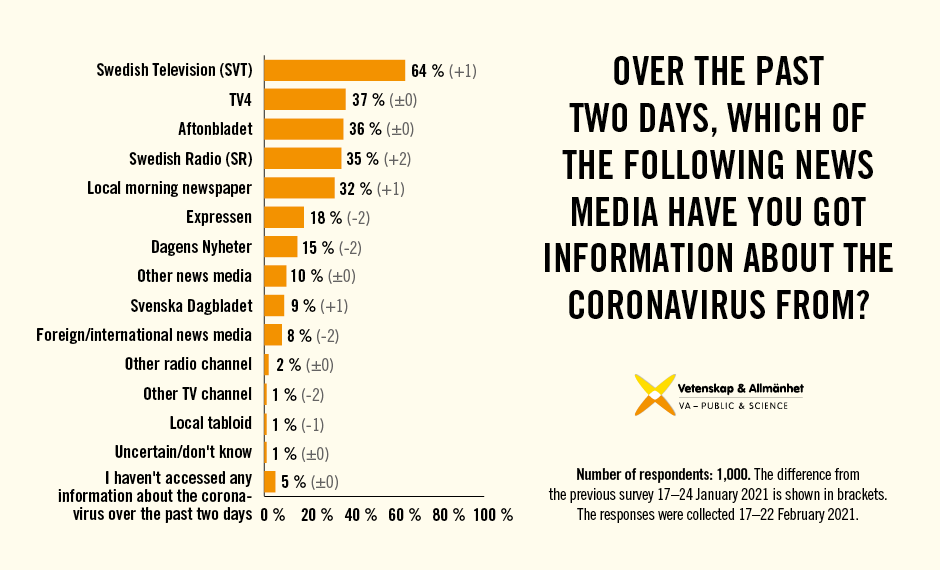
The proportion of respondents who have fairly or very high confidence in the media’s reporting on the coronavirus is greatest for SVT (77 percent), Swedish Radio (73 percent) and TV4 (53 percent). The proportion is smallest for the tabloids Expressen (15 percent), Aftonbladet (19 percent) and foreign/international media (21 percent).
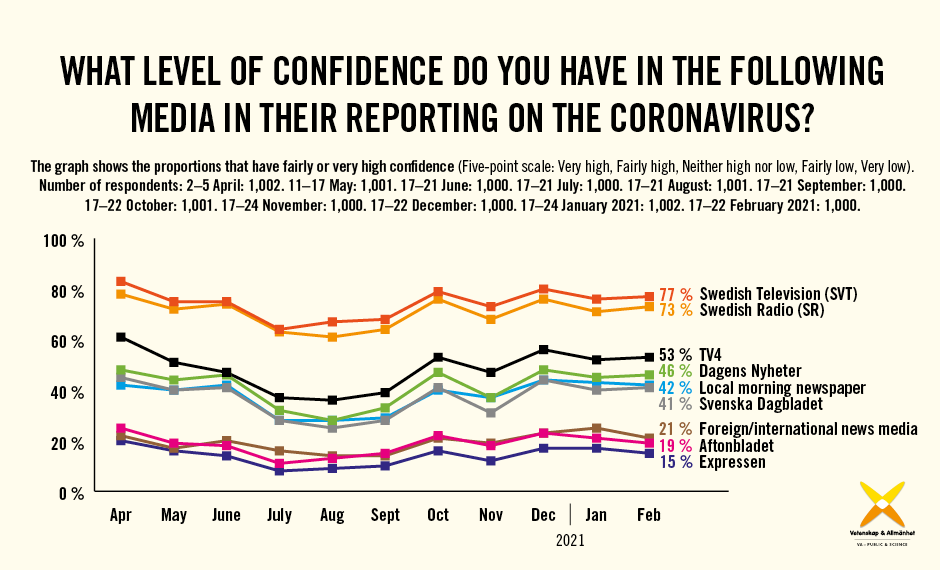
Just under half (46 percent) of respondents perceive the tone of the Swedish media’s reporting on the coronavirus as fairly or very hyped/alarmist. This perception is more common among men (50 percent) than among women (41 percent). One in ten (10 percent) perceive the tone as fairly or very watchful/cautious and four out of ten (39 percent) perceive it as neither hyped/alarmist nor watchful/cautious.
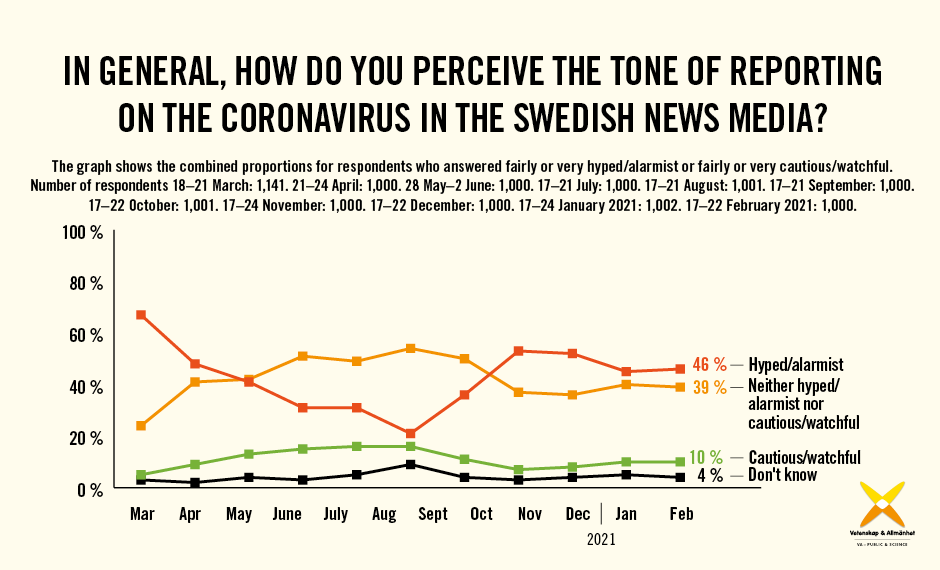
About the survey
The survey was conducted by Kantar Sifo and consisted of 1,000 interviews with a web panel based on random sampling. The interviews were conducted 17–22 February 2021. The results are weighted based on gender, age and region of residence.
In order to monitor the Swedish public’s news consumption, confidence in key professional groups and attitudes towards media reporting over time, we are conducting a number of studies during the course of the pandemic. We also plan to undertake a content analysis of reporting on the coronavirus in the Swedish media in order to map any changes in reporting during different phases, and how this relates to public attitudes during the same time period.
The study is being conducted with the support of the Anne-Marie and Gustaf Anders Foundation for Media Research, Karolinska Institute, Magnus Bergvalls Foundation, Södertörn University, the Wenner-Gren Foundations and the Swedish Research Council.
Read more about VA’s study and the results of the first, second, third, fourth, fifth, sixth, seventh, eighth, ninth, tenth, eleventh, twelfth and thirteenth waves of the study.

